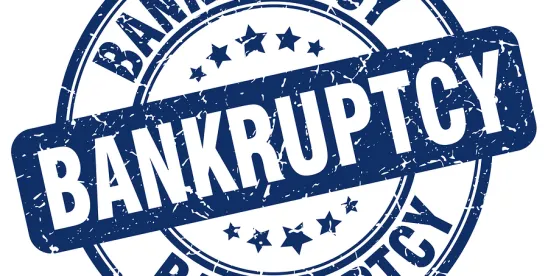Over the last two years, much of the healthcare world has been watching the government’s prosecution of Insys Therapeutics for its sales and marketing practices related to its Subsys spray. Subsys is powerful and highly addictive fentanyl spray (administered under the tongue) that was approved by the FDA in 2012 for the treatment of persistent breakthrough pain in adult cancer patients who were already receiving, and tolerant to, regular opioid therapy. On June 5, 2019, DOJ announced a global resolution with Insys, including criminal pleas, a Deferred Prosecution Agreement (DPA), a civil settlement agreement, and a Corporate Integrity Agreement (CIA). Then, on June 10, 2019, Insys filed for bankruptcy protection, which triggered DOJ and HHS’s ability to upend these agreements and impose powerful criminal, civil, and exclusion remedies against Insys.
While much of the coverage of this case over the last few years has focused on the high-profile prosecution and conviction of company executives (including Insys’s founder) and other employees who were accused of paying kickbacks to prescribers in exchange for increased prescriptions and increased doses of Subsys, the resolution of this case on the corporate side has proven to be equally fascinating.
Here is the high-level timeline of the relevant events:
April 2018 – the United States intervened in five qui tam False Claims Act lawsuits against Insys. DOJ’s complaint alleged that Insys paid kickbacks to induce physicians and nurse practitioners to prescribe Subsys for their patients, improperly encouraged physicians to prescribe Subsys for patients who did not have cancer, and lied to insurers about patients’ diagnoses in order to obtain reimbursement.
August 2018 – Insys and DOJ reached an agreement to enter into a civil settlement, which required Insys to pay $150 million (and an additional $75 million under certain circumstances) and to cooperate with the government.
May 2, 2019 – Insys’s founder and four executives were convicted after trial of racketeering conspiracy. These convictions brought the total number of convictions of company executives to eight.
June 5, 2019 – DOJ announced that Insys had entered into a global resolution of the criminal and civil cases against it. This global resolution involves:
-
A $225 million civil settlement that resolved the five pending qui tam matters. This amount was characterized as entirely restitution. Insys did not agree that it was solvent and would remain so following the execution of the agreement, as is typically required. Notably, the civil settlement required Insys to agree that OIG could exclude the company for default of payment, and that Insys could not contest that exclusion.
-
A guilty plea under a Deferred Prosecution Agreement to five counts of mail fraud by the company's operating subsidiary, Insys Pharma, Inc. The DPA also included admissions to a detailed Statement of Facts. The basis for the plea and DPA was an Information filed by DOJ. In this Information, the government alleged that from August 2012 to June 2015, Insys used sham speaker programs that purported to increase brand awareness of Subsys through peer-to-peer educational lunches and dinners, when, in reality, the programs were used as a vehicle to pay bribes and kickbacks to targeted practitioners in exchange for increased Subsys prescriptions and for increased dosages of those prescriptions.
-
Criminal forfeiture of $28 million, plus a $2 million criminal fine.
-
A Corporate Integrity Agreement that included some notable provisions:
-
No release of permissive exclusion until the CIA obligations are performed.
-
Admission to a three-page, 36-paragraph Statement of Facts, and Insys’ agreement that these facts are a sufficient basis to exclude Insys.
-
Requirement that Insys (1) post a website that lists in a prominent way the criminal and civil charges, and the misconduct at issue; (2) institute a three-year clawback of executive compensation related to the misconduct; and (3) divest within 12 months Subsys and a “buprenorphine candidate” product.
-
June 10, 2019 – Insys filed for bankruptcy under Chapter 11 and indicated it would sell substantially all of its assets, thereby triggering the ability of the United States to upend the agreements in critical respects:
-
DOJ may rescind the DPA and convict Insys, if the company does not pay the criminal fines and forfeitures.
-
DOJ may also convict Insys if the company fails to “cooperate” by not complying with the terms of the civil settlement or the Corporate Integrity Agreement.
-
The OIG, under the terms of the civil settlement, may seek to exclude Insys for default of payment (without Insys having the right to contest exclusion).
-
The OIG may seek exclusion of Insys under the terms of the Corporate Integrity Agreement (under which permissive exclusion was only waived upon completion of CIA obligations).
-
DOJ may assert a $600 million claim in the bankruptcy that Insys has agreed not to contest (which nearly triples the agreed-to civil settlement amount).
While the outcome of this most recent turn of events is not yet clear, the agreed-upon resolution of this case is both interesting and instructive. For example, the terms of the Corporate Integrity Agreement – which require the posting of a website, clawbacks of compensation, and divestiture – are extreme measures not typically seen in Corporate Integrity Agreements and may signal a new approach by the OIG to companies and providers whose conduct it finds to be particularly egregious.
Notwithstanding the complications on the civil side of obtaining a financial recovery, this full-force enforcement effort by the government resulted in the DPA and convictions of Insys and its subsidiary, convictions of the Insys founder and other executives, and the imminent dissolution of the company through an orderly asset sale. From the government’s perspective, we would expect that this will be regarded as highly successful prosecution of egregious conduct that deeply harmed federal health care programs and patients.
Further, Insys has became the most recent of several corporate bankruptcies following significant resolutions between DOJ and health care providers. Each of these bankruptcies has had unique circumstances, and has sharpened DOJ and private counsels’ understanding of the implications, both intended and unintended, of post-resolution bankruptcies.





 />i
/>i

